Meet The Bird of Paradise Plant
The Strelitzia reginae, commonly known as the Bird of Paradise plant, is an exotic and architecturally striking plant admired for its unique flowers that resemble brightly colored birds in flight. Native to South Africa, this tropical beauty brings a touch of the extraordinary to both indoor and outdoor spaces (in warm climates). While they can take a few years to bloom, their impressive foliage and eventual spectacular flowers make them a rewarding addition to any plant enthusiast’s collection.
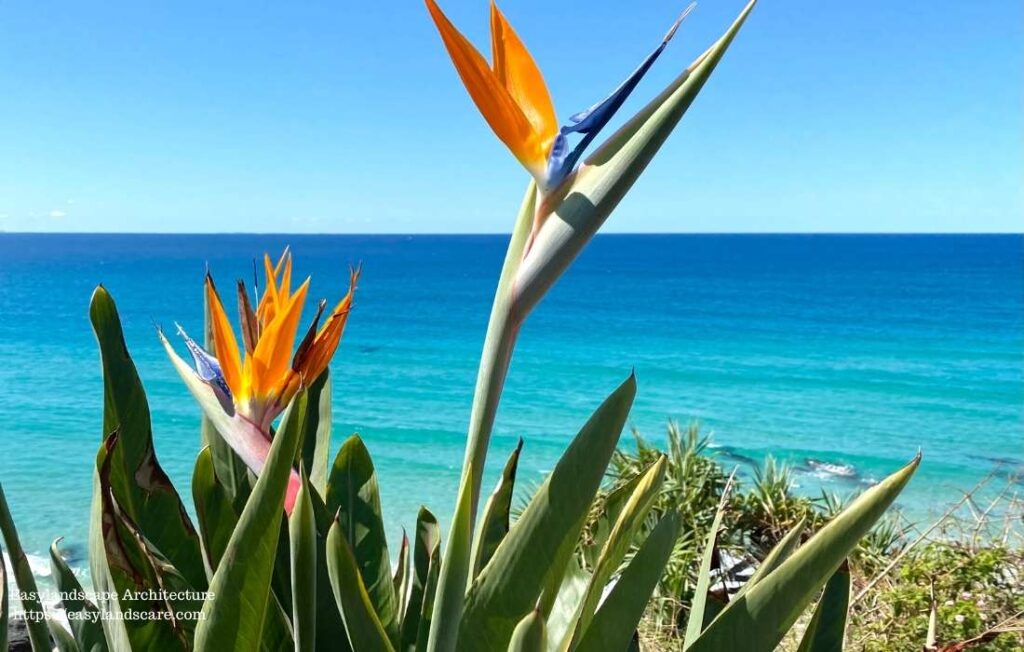
This guide provides a comprehensive overview of Bird of Paradise plant care, covering essential aspects such as light, watering, humidity, soil, and how to encourage those iconic blooms.
Why Choose a Bird of Paradise Plant?

Bird of Paradise plants are undeniably dramatic. Their large, paddle-shaped, bluish-green leaves create a bold tropical statement. When mature, they produce breathtaking flowers with vibrant orange sepals and blue petals, resembling the head of a crane or bird in flight. Even without blooms, their lush foliage adds a touch of the exotic to any setting. They are also relatively low-maintenance once their basic needs are met, making them a captivating yet manageable addition to your plant family.
Essential Tips for Bird of Paradise Plant Care
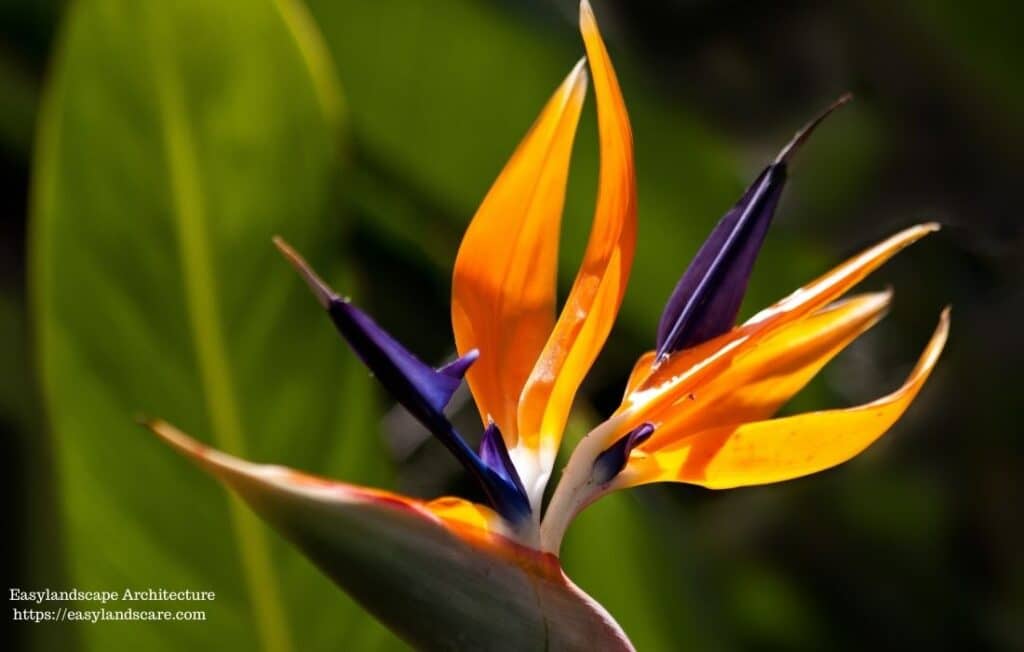
Light Requirements
Proper lighting is crucial for Bird of Paradise plant care:
- Bright, Direct Sunlight (for Blooming): To encourage blooming, Bird of Paradise plants need at least 6 hours of bright, direct sunlight per day. Insufficient light is a primary reason why these plants may not flower indoors.
- Bright, Indirect Light (for Foliage): While they can tolerate bright, indirect light, especially when young, providing ample direct sun is crucial for mature plants to produce flowers.
- South or West-Facing Windows: These locations typically offer the best light exposure indoors. Place your Bird of Paradise plant directly in front of these windows.
- Outdoor Placement (in warm climates): In frost-free climates, Bird of Paradise plants thrive outdoors in full sun.
- Rotate the Plant: Rotate your plant periodically to ensure all sides receive even light exposure.
Watering and Moisture
Watering is a key aspect of Bird of Paradise plant care:
- Consistent Moisture During Growing Season: During the active growing season (spring and summer), Bird of Paradise plants prefer consistently moist soil. Water thoroughly when the top inch of soil feels slightly dry to the touch.
- Water Thoroughly: When watering, ensure the water reaches the roots by watering deeply until it drains from the bottom of the pot. Discard any excess water in the saucer.
- Slightly Drier in Winter: During the cooler, less active winter months, reduce the frequency of watering. Allow the top two inches of soil to dry out before watering. Avoid letting the soil dry out completely for extended periods.
- Sensitive to Overwatering: While they need consistent moisture, Bird of Paradise plants are susceptible to root rot if the soil remains waterlogged. Ensure good drainage.
Humidity Preferences
Humidity plays a significant role in Bird of Paradise plant care:
- Moderate to High Humidity: Native to tropical regions, Bird of Paradise plants appreciate moderate to high humidity levels (above 50%). Dry air can lead to brown leaf edges and overall stress.
- Increase Humidity By:
- Humidifier: Using a humidifier is an effective way to maintain consistent humidity.
- Pebble Tray: Place the pot on a tray filled with pebbles and water (ensure the pot base is above the water level).
- Grouping Plants: Grouping plants together creates a more humid microclimate.
- Misting: Mist the leaves regularly with room temperature water, especially during dry indoor periods.
Temperature Preferences
Temperature is crucial for Bird of Paradise plant care:
- Warm Temperatures: Bird of Paradise plants thrive in warm, consistent temperatures between 18-27°C (65-80°F).
- Avoid Cold Drafts and Fluctuations: Protect your plant from cold drafts, sudden temperature changes, and proximity to heating or cooling vents, which can stress the plant and potentially hinder blooming.
- Minimum Temperature: Avoid exposing the plant to temperatures below 10°C (50°F). Brief dips slightly lower might be tolerated by mature plants, but prolonged cold can cause damage.
Soil Requirements
The right soil is essential for Bird of Paradise plant care:
- Well-Draining, Rich Mix: Use a well-draining potting mix that is also rich in organic matter. A mix formulated for tropical plants or a blend of general-purpose potting mix with added peat moss, compost, and perlite works well.
- Good Aeration: Ensure the soil provides good aeration to prevent root rot.
- Repotting: Repot your Bird of Paradise plant every 1-2 years for younger plants and every 3-4 years for mature plants, typically in the spring. Choose a pot that is only slightly larger than the previous one. Mature plants prefer to be slightly root-bound to encourage blooming.
Fertilizer
Fertilizing is an important aspect of Bird of Paradise plant care:
- Regular Feeding During Growing Season: During the active growing season (spring and summer), feed your Bird of Paradise plant every 2-4 weeks with a balanced liquid houseplant fertilizer diluted to half the recommended strength. You can also use a fertilizer higher in phosphorus to encourage blooming in mature plants.
- Reduce or Stop in Winter: Reduce or stop fertilizing during the fall and winter months when the plant’s growth naturally slows down.
- Avoid Over-Fertilizing: Over-fertilizing can lead to salt buildup in the soil and damage the roots.
Pruning
Pruning helps maintain the health and appearance of your Bird of Paradise plant:
- Remove Dead or Damaged Leaves: Regularly remove any dead, brown, or damaged leaves at the base of the plant using clean, sharp pruning shears.
- Pruning Spent Flower Stalks: Once a flower has faded, cut the entire flower stalk down to the base of the plant.
- Avoid Excessive Pruning: Bird of Paradise plants don’t require heavy pruning. Focus on removing dead or unsightly foliage.
Encouraging Blooms
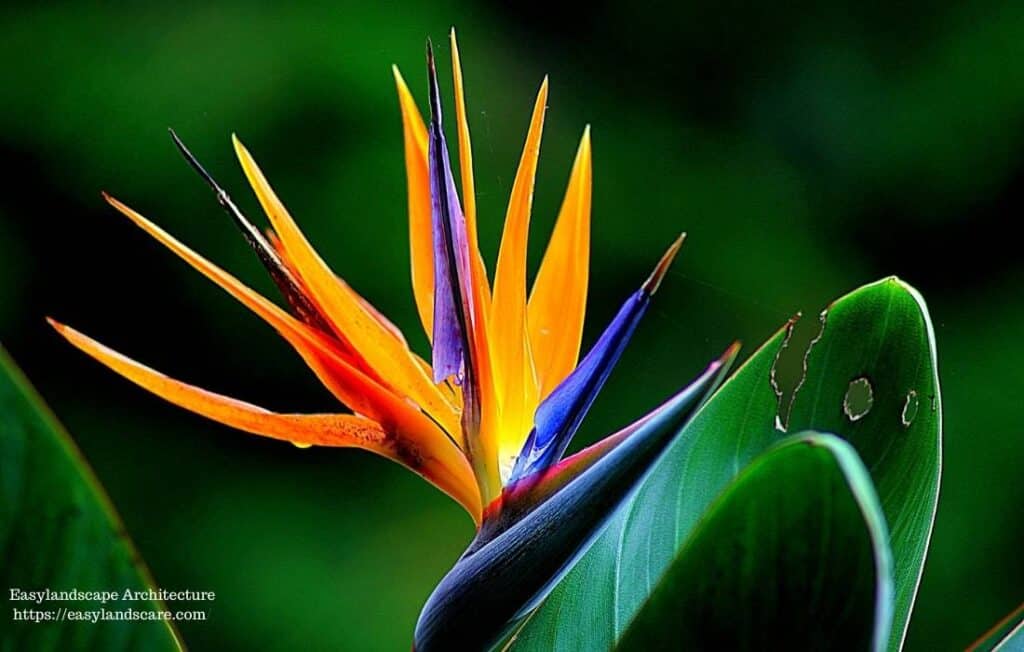
Encouraging blooms is a rewarding part of Bird of Paradise plant care:
- Mature Plant: Bird of Paradise plants typically take 3-5 years to mature enough to flower. Patience is key!
- Sufficient Light: As mentioned, at least 6 hours of direct sunlight is crucial.
- Consistent Watering and Feeding During Growing Season: Proper care during the active growth period supports flower development.
- Slightly Root-Bound: Mature plants often bloom best when they are slightly root-bound. Avoid repotting too frequently.
- Temperature Fluctuations (Subtle): A slight drop in nighttime temperatures (around 10-15°C or 50-60°F) during the late fall and early winter can sometimes help initiate blooming.
Propagation of Bird of Paradise Plant
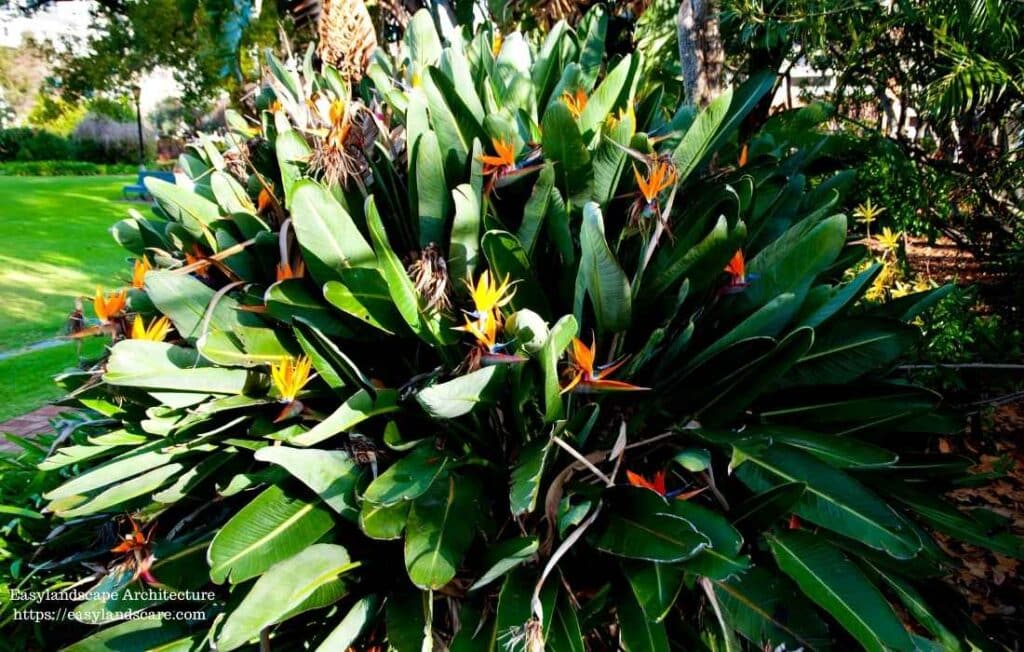
The most common method for propagating Bird of Paradise plants is through division:
- Division:
- When repotting a mature plant with multiple stems, carefully separate the rhizomes (underground stems) into sections, ensuring each section has healthy roots and at least one growth point (leaf or new shoot).
- Plant each division into its own pot with fresh, well-draining potting mix.
- Water lightly and place in a warm, bright location.
- Keep the soil consistently moist as the new plants establish.
- Be aware that plants propagated by division may also take several years to bloom.
Common Issues and Troubleshooting in Bird of Paradise Plant Care
Addressing common issues is vital for successful Bird of Paradise plant care:
- Lack of Blooming:
- Insufficient Light: The most common reason. Provide more direct sunlight.
- Immaturity: The plant may not be old enough to bloom.
- Insufficient Watering or Fertilizing During Growing Season: Ensure consistent care.
- Over-Repotting: Mature plants prefer to be slightly root-bound.
- Brown Leaf Edges or Tips:
- Low Humidity: Increase humidity levels.
- Inconsistent Watering: Maintain consistent soil moisture.
- Salt Buildup from Fertilizer: Flush the soil with water occasionally.
- Yellowing Leaves:
- Overwatering: Allow the top inch of soil to dry out before watering. Ensure good drainage.
- Nutrient Deficiency: Fertilize during the growing season.
- Drooping Leaves:
- Underwatering: Water thoroughly.
- Overwatering/Root Rot: Check the roots and adjust watering.
- Cold Temperatures or Drafts: Move the plant to a warmer, sheltered location.
- Pest Infestations (Spider Mites, Scale):
- Regular Inspection: Check leaves and stems regularly.
- Treatment: Wipe leaves, use insecticidal soap, or neem oil.
Tips for Successful Bird of Paradise Plant Care
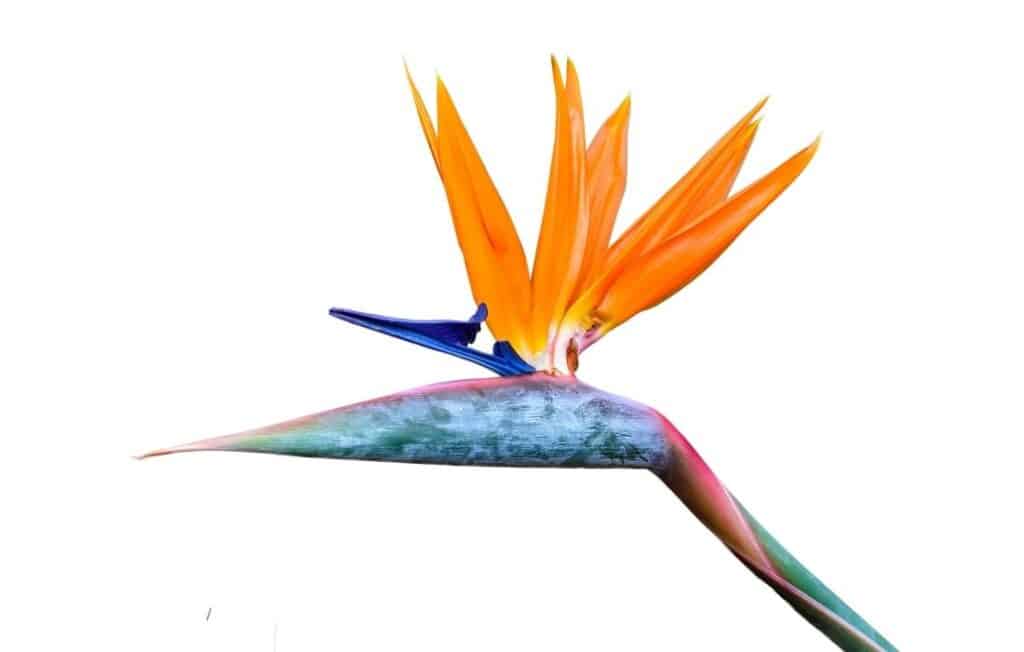
- Provide ample bright, direct sunlight, especially for mature plants you want to flower.
- Water consistently during the growing season, allowing the top inch of soil to dry slightly.
- Maintain moderate to high humidity.
- Keep the plant in a warm, stable environment, away from drafts.
- Use a well-draining, rich potting mix.
- Fertilize regularly during the spring and summer.
- Be patient – it can take several years for blooms to appear.
With its dramatic foliage and the promise of extraordinary flowers, Bird of Paradise plant care is a truly captivating addition to any plant collection. While it may require a bit more attention to light and humidity, the reward of its tropical grandeur is well worth the effort. Provide the right conditions, and you’ll be rewarded with a stunning focal point that brings a touch of the exotic to your space. If you liked this article, you might also be interested in our article on Best Indoor Plants: Top 15 Picks and Care Tips





